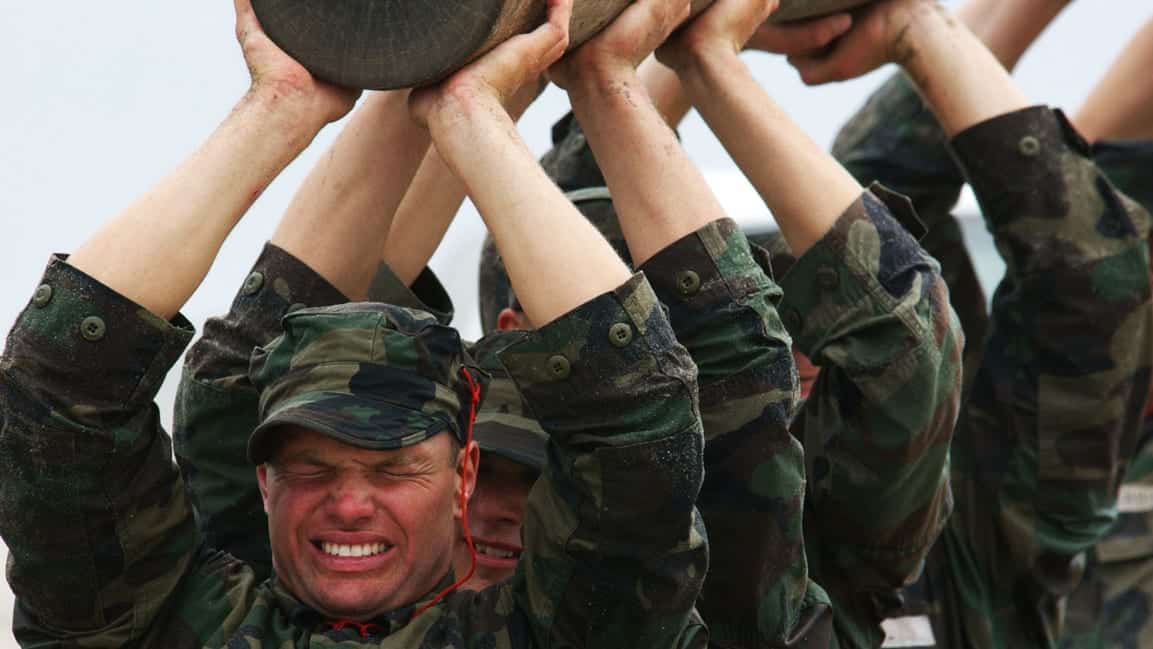These Navy SEAL tricks will help you perform better under pressure.

Use this the next time you need to think clearly in a high-pressure situation.
When’s the last time you paid attention to your breath? Most of us take it for granted and don’t stop to think how deeply we inhale or exhale. But most of us also survive on shallow breaths that have us living on edge constantly.
“We are a nation of shallow breathers,” says Lynne Everatt, coauthor of The 5-Minute Recharge: 31 Proven Strategies to Refresh, Reset, and Become the Boss of Your Day. “Deep breathing comes naturally to children, but we lose the ability because we’re in a constant state of fight-or-flight, low-level stress. Our breathing migrates up in our bodies; it’s an anxious breath.”
Controlled breathing, on the other hand, is the fastest, most effective way to trigger the relaxation response, enabling you to think more clearly and perform better under pressure, she says.
“We take better care of our phones than ourselves,” says Everatt. “When our phone battery goes from green to red, we immediately stop and recharge. But when our own bodies go into the red zone, we push through. Living in the red zone means living in a zone of depletion where we’re more susceptible to burnout, anxiety, or depression.”
The Navy SEALs use two breathing techniques that force the body into a more relaxed state when they’re in a high-pressure situation, and anyone can use them to control stress, says Everatt.
TACTICAL BREATHING
“Tactical breathing” is a technique to use when you feel yourself having a fight-or-flight response. It involves all your breathing muscles–from chest to belly.
Here’s how it works: Place your right hand on your belly, pushing out with a big exhale. Then breathe in through your nostrils, slowly drawing the breath upward from your belly to your upper chest.
Pause and exhale, starting from your chest and moving downward to the air in your belly. Imagine your belly button touching your spine.
Once you’re comfortable with a full, deep breath, repeat it, this time making the exhale twice as long as the length of the inhale. For example, inhale to the count of four, pause briefly, and exhale to the count of eight. Repeat three times.
BOX BREATHING
The second Navy SEAL technique is called “box breathing,” and it’s meant to ground you, sharpen your concentration, and leave you feeling alert but calm. It uses the tactical breath technique over a longer period of time in a “box pattern.” You inhale, hold, exhale, hold–each for the same duration.
Start by pushing the air out of your chest, keeping your lungs empty for the count of four. Then start the tactical breathing, inhaling through your nose for a count of four, drawing air into your belly and moving up into your chest. Hold the air in your lungs for a count of four.
The movement should feel fluid and open; don’t clamp down at the back of your throat. Exhale smoothly, starting at the chest and moving to the belly, for four slow counts. Complete the box with a pause of four before beginning another repetition.
Continue this technique for five minutes, building your breath strength by using your full range of breathing muscles as you draw in and push out breath.
“Unfortunately, we don’t have a battery reading on our wrist telling us to take a break,” says Everatt. “We need to sprinkle in small breaks that can energize us when we’re feeling depleted.” So the next time you feel that way, just give these techniques a try.
Share This!
Related Posts
There are a lot of reasons why your voice might suddenly sound breathy, raspy, or strained. But there are also things you can do to reverse it [...]
Our voice is the major way in which to express ourselves, manifest energy into form and as a healing tool for those of us that feel we [...]
Women of Spirit, Transforming Lives is the second volume in this Matrika Press series. This book is a compilation of women sojourners, sages, mystics, witches, shamans, medicine [...]



